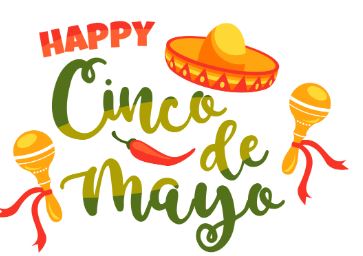Cinco de Mayo: Beyond Battle Lines — The Evolution and Impact of a Cultural Celebration in the United States

Cinco de Mayo, observed annually on May 5th, is a day that has grown to encompass a dual celebration of Mexican culture and heritage within both Mexico and the United States. Despite its widespread celebration, many people are unaware of its origins and how it differs from other significant Mexican holidays, such as Mexican Independence Day.
History and Origin
Cinco de Mayo commemorates the Mexican Army’s surprising victory over French forces at the Battle of Puebla on May 5, 1862, under the leadership of General Ignacio Zaragoza. The victory was a significant morale booster for the Mexican troops and became a symbol of the country’s ability to defend its sovereignty against a powerful foreign nation.
Cinco de Mayo vs. Mexican Independence Day
It is crucial to note that Cinco de Mayo is not Mexican Independence Day, which is celebrated on September 16th and marks Mexico’s declaration of independence from Spain in 1810. Cinco de Mayo has not attained the same level of importance in Mexico as Independence Day; it is primarily celebrated in Puebla where the battle took place, with military parades and reenactments.
Cinco de Mayo in the United States
In the United States, Cinco de Mayo has evolved from its historical roots into a broader celebration of Mexican culture and heritage. The holiday was first celebrated in the U.S. by Mexican-American communities in the 1860s, identified with the Mexican resistance to foreign domination during a time when the U.S. itself was deeply involved in the Civil War.
Cultural Impact and Modern Celebrations
Today, Cinco de Mayo is celebrated more widely in the United States than in Mexico. Across American cities, the day is marked by parades, mariachi music performances, street festivals, and other cultural exhibitions highlighting the Mexican culture. Traditional Mexican foods, such as tacos and mole poblano, are featured in restaurants and homes, while vibrant decorations, including sombreros and brightly colored piñatas, adorn public and private spaces.
Commercialization and Criticism
The commercialization of Cinco de Mayo in the U.S. has not been without its controversies. Critics argue that it perpetuates stereotypes and commercial interests rather than providing a genuine exploration of Mexican culture. Large-scale beer and liquor promotions have also drawn criticism for promoting excessive drinking under the guise of cultural celebration.
Educational Opportunities
Educators and cultural advocates see Cinico de Mayo as an opportunity to educate the public about Mexican history and culture beyond the stereotypes often seen in its commercialized celebration. Schools and communities can use this day to delve into the rich history of Mexico, including its struggles and victories, which are often overshadowed by the festive atmosphere.
Cinco de Mayo serves as a unique example of how a historical event has been transformed and embraced by a neighboring country, blending cultural celebration with historical recognition. While it is a minor holiday in Mexico, in the United States, Cinco de Mayo has become a significant annual celebration, symbolizing the strong cultural ties between the two countries. As it continues to be observed, there lies a profound opportunity to honor and reflect on the deep and enduring cultural contributions of Mexican-Americans to the fabric of American society.





